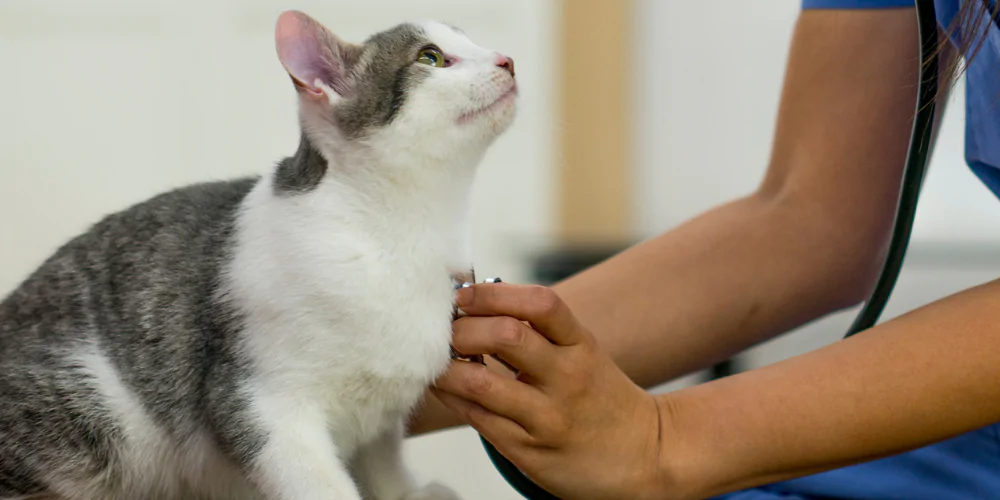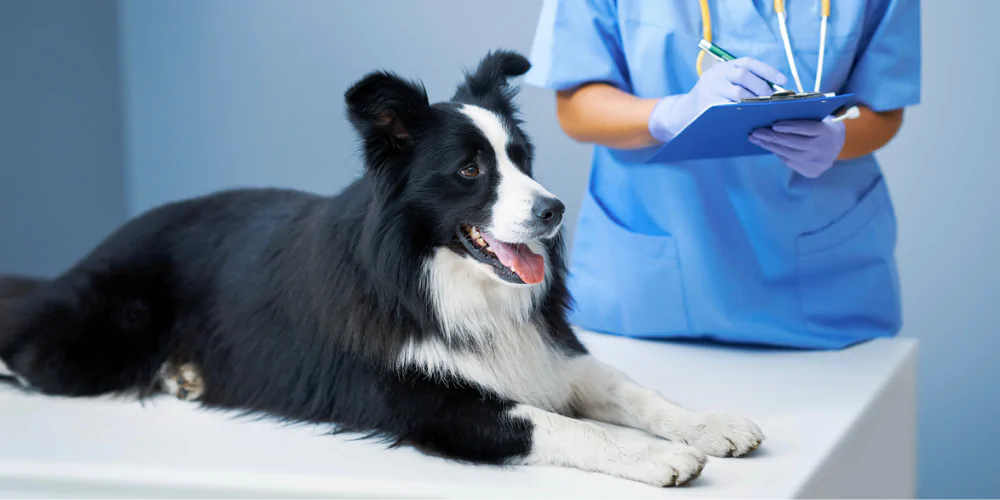
Dog and cat blood donation: How does it work?

Dr Scott Miller
6 February 2022 | 8 minutes read
If you didn’t even realise pets could donate blood, don’t worry, you’re not alone. Dr Scott Miller is here to give you the details on dog and cat blood donation, including how it works, where you can do it, and why it’s important.
Table of Contents
- Why would a dog or cat need a blood transfusion?
- Where can my dog or cat donate blood?
> Are there dog and cat blood banks?
> Is it safe for my dog or cat to donate blood? - What are the canine and feline blood donor requirements?
> How does dog and cat blood donation work?
> How much blood can a dog or cat donate?
> How often can a dog or cat donate blood? - What are the different dog blood types?
> Is there a universal donor dog blood type?
> Can certain breeds not donate blood? - What are the different cat blood types?
> Is there a universal donor cat blood type?
> Can cats donate blood to dogs?

Why would a dog or cat need a blood transfusion?
Fun fact – did you know the very first successful blood transfusion was all the way back in 1665, but it was actually between two dogs, not humans? Pet blood donation is a crucial service and, as with humans, there are sometimes shortages in supply.
So, why exactly would a dog or cat need a blood transfusion? Well, just like humans, pets can suffer from blood loss. Having a blood transfusion could save their life. Reasons why a pet may need blood include:
- Living with a disease that causes clotting or bleeding.
- Suffering a serious trauma, such as a road traffic accident.
- Losing blood while going through surgery.
- Ingesting toxins like rat bait, or being bitten by an animal with toxic venom.
Vet clinics will get in touch with a pet blood bank when they need blood for a sick animal. The blood is warmed up to body temperature before it’s given to the poorly cat or dog.

Where can my dog or cat donate blood?
Set up in 2007, Pet Blood Bank is the first licensed pet blood bank in the UK. They have country-wide sessions where owners can bring their dogs to donate blood. The sessions are run by a fully-trained team which includes a vet and vet nurse.
If you’re a cat owner and would like to volunteer your feline for blood donation, get in touch with your local vet practice. Your cat will be added to a list of donors and the clinic will call you if they need blood. This means you’ll need to be available in an emergency.
> Are there dog and cat blood banks?
Pet Blood Bank currently only run a dog blood bank, but they are working on launching a blood bank for cats. In the meantime, cat parents can apply to give blood at their local vets.
> Is it safe for my dog or cat to donate blood?
Looking after your pet’s safety and wellbeing is always a top priority when it comes to blood donation sessions.
For a dog donating blood, the Pet Blood Bank team will:
- Check that your pet is fully comfortable throughout each stage.
- Stop the donation if your pet shows signs of anxiety or distress.
For a cat donating blood, the vet clinic will:
- Keep them in the clinic for a few hours after donation to check they’ve fully come around from the sedative and have eaten.
- Ask you to keep them indoors for 24 hours so their body can replace the blood cells.

What are the canine and feline blood donor requirements?
First things first, there are a few different things that cats and dogs should have to be suitable blood donors.
Dogs should:
- Have a happy and confident personality, so they don’t get distressed by the procedure.
- Weigh over 25kg.
- Be aged between one and eight years old.
- Be fit and healthy, not currently on any medication.
- Have never travelled abroad (outside of the UK/Ireland).
- Be up to date with their vaccinations, flea and worming treatments.
Cats are very similar to dogs, with a few slight differences:
- Enjoy being handled and comfortable around people.
- Weigh over 4kg.
- Be aged between one and ten years old.
- If female, neutered and has never had kittens.
- Be either an indoor or outdoor cat (this doesn’t affect their eligibility).
The personality of your pet is especially important while there are Covid restrictions in place. You may need to wait outside while your pet gives blood, so they’ll need to be comfortable being in a new place and around new people without feeling nervous or anxious.
> How does dog and cat blood donation work?
Now we know what’s needed to be a blood donor, let’s look at how the actual blood donation process works.
Dogs:
- First, your pooch gets a full health check first, including a physical examination and small blood test.
- If they’re safe to donate, your dog is asked to lie on their side after being lifted onto a table.
- The vet takes their blood as the vet nurse gives them plenty of reassuring rubs.
- After donating, your pup is given a tasty treat and water.
Cats:
- A vet checks your cat’s health.
- The vet also take a small amount of blood to check their blood type and look for viruses like FIV and feline leukaemia.
- Your cat will be lightly sedated to help them feel more relaxed and comfortable during the donation.
- The vet team gives your cat post-donation care to help them safely come round from the sedative.
After your pet has donated blood, you’ll be asked to keep them indoors and watch them for at least 24 hours. Allow them to rest so their body can begin to replace the donated blood cells, which takes around three days.
> How much blood can a dog or cat donate?
Pet Blood Bank takes around 450ml of blood from a donor dog. One unit of blood could save the lives of up to four dogs.
Vet clinics will usually take one unit of blood from a cat, around 40 – 60ml. The process of taking their blood normally lasts a few minutes, followed by a few hours of monitoring post-donation.
> How often can a dog or cat donate blood?
A dog can donate blood up to six times a year, with a gap of at least eight weeks between sessions. If signed up, Pet Blood Bank UK will ask your dog to commit to donating at least three to four times a year. They’ll only get in touch when they need your dog’s specific blood type.
Cats are less appreciative of the blood donation process and frequently need sedation. To avoid excessive anxiety or stress in felines, twice to four times yearly visits are suggested.

What are the different dog blood types?
In the UK, dogs are classed as either having a DEA 1 positive or DEA 1 negative blood type. Dogs actually have over 12 blood groups, but UK vets screen for DEA 1 as it is the most potent group.
Most dogs are DEA 1 positive, while only around 30% of eligible blood donor dogs have DEA 1 negative. If your pup has a negative blood type, they’ll likely be invited to donate more often during each year.
> Is there a universal donor dog blood type?
DEA 1 negative blood can be seen as a kind of universal donor dog blood type, as it can be given to canines with positive or negative blood types.
Breeds more likely to be DEA 1 negative include:
- Airedale Terriers
- Border Collies
- German Shepherds
- Lurchers
- Weimaraners
> Can certain dog breeds not donate blood?
Some breeds are not accepted for dog blood donation:
- Dogs registered under the Dangerous Dogs Act, such as Dogo Argentinos and Pit Bull Terriers.
- Chow Chows – they have pigmented gums, making it difficult for vets to check if they are healthy prior to donation.
- English Bulldogs – their body and skull shape could mean they are uncomfortable lying down and have difficulty breathing.

What are the different cat blood types?
Cats have a more simple blood group system compared to dogs, and will have an A, B, or AB blood type. Cats with an AB blood type are harder to find.
If your cat has an A or B blood type, they will need to receive blood from another cat with the same blood type.
> Is there a universal donor cat blood type?
There is no universal donor cat blood type, although cats with AB blood can receive blood from any of the three cat blood types. Getting whole blood from a cat with an A or B blood type could cause a reaction.
> Can cats donate blood to dogs?
Cats have a different blood type to dogs so wouldn’t be able to be a donor for a dog blood transfusion.
It’s important to be prepared for an emergency, which is why we offer flexible pet insurance for cats and dogs.


